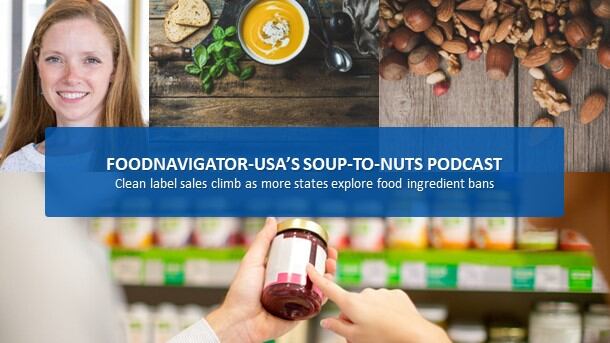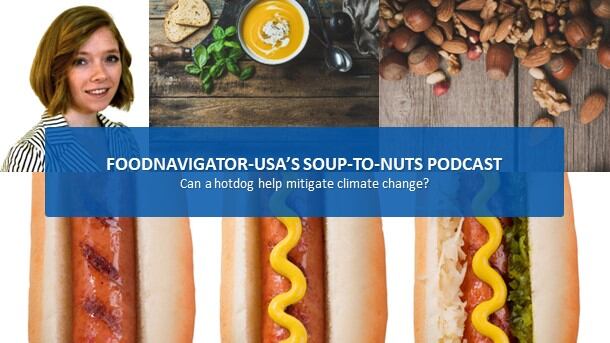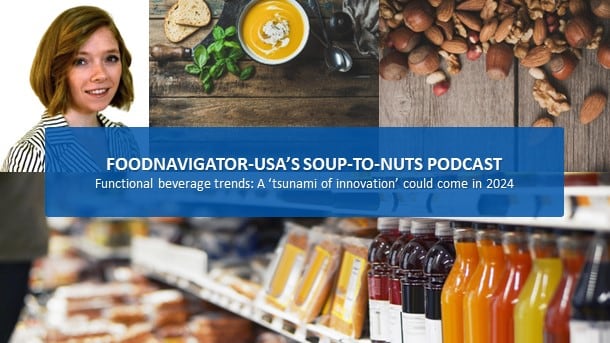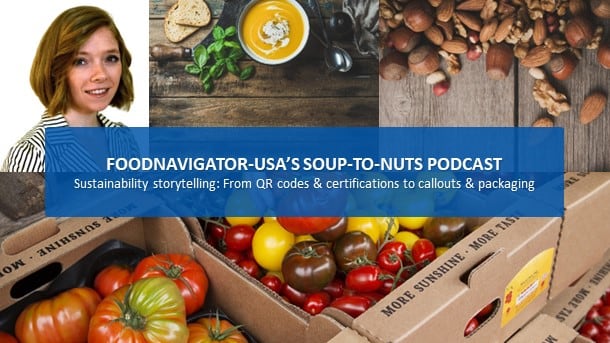According to new research from the Acosta Group, 81% of US shoppers surveyed in January said it is important to them to purchase clean label foods and 55% say they would like more regulations, like the recently passed California Food Safety Act of 2023 that gives manufacturers until 2027 to remove from products sold in the state brominated vegetable oil, potassium bromate, propylparaben and red dye No. 3.
At the same time, some consumers cannot afford the higher prices clean label products can command or may not have the sophistication necessary to navigate the nuances of the food safety and nutrition debates playing out on the national stage, which could dampen sales of clean label products in the coming year.
In this episode of FoodNavigator-USA’s Soup-To-Nuts podcast, Acosta Group Senior Vice President of Thought Leadership and Shopper Insights Kathy Risch shares takeaways from the company’s Clean Label Insights Study released this month, including how they define clean label, what attributes resonate with them and how and where they prioritize clean label against other factors, such as price. She also shares how generational differences and headlines about state bans are influencing clean label purchases, and what these might mean for the future of the movement.
[Editor’s note: Never miss an episode of FoodNavigator-USA’s Soup-To-Nuts podcast – subscribe today.]
‘The term clean label is getting more and more attention as a specific label’
Even though clean label is not officially defined and is more often used as an insider-term by industry, Risch says Acosta found 83% of shoppers know about clean label products or have heard the term – opening the door for its use more broadly in marketing than in the past.
But as Risch explains, how consumers characterize the concept differs by generation, which may require a more nuanced approach from marketers hoping to leverage clean label’s health halo.
“The term clean label is getting more and more attention as a specific label. But the whole idea of products not having bad ingredients or removal of bad ingredients is decades old,” said Risch. “Over time clean label has been used as the term within the industry to represent these products without things or simpler labels. Brands and retailers have started using that label in the last several years to actually label their lines of products at retail as clean, clean ingredients. Or even calling [out] a clean label for certain brands. [For example,] Raw Sugar is very bold about being clean label, but they may not be as clean as another brand that is saying, 'I'm going to be totally free of fragrance as well. So again, there is a delineation there.”
She added consumers’ understanding of the term or concept has also solidified to include no artificial ingredients or flavors, free of chemicals, additives, preservatives and pesticides, and made with nothing synthetic.
But, she added, consumers are not yet calling out specific ingredients, as the growing number of state bills seeking to ban ingredients do.
There are generational differences in how consumers understand clean label, Risch added. For example, older generations are more likely to think of clean as “free-from” ingredients they want to avoid, while younger shoppers think of it as including attributes that they want, such as natural or organic.
Higher prices for clean label give consumers pause
As consumer awareness and understanding of clean label has increased and coalesced, so too has their purchase rate of clean label products. Using point of sale data from NIQ, Acosta’s report reveals that clean label sales are outperforming store sales by a compound annual growth rate of 8% versus 6%, respectively, over the last four years.
While Risch says she likes to look at the glass as half full, she did caution that inflation paired with clean label products’ premium pricing could slow their growth in the coming years.
“The average price of clean label products has gone up about 10%. And that is actually softening the growth rate a bit” in the last 12 months compared to the prior four years, she said.
“They still value it, and it is still making it into their cart, but it is just a tougher decision given the price,” she added.
If the price of clean label products was the same as conventional counterparts, Risch said Acosta’s data shows 50% of consumers would opt for the clean label version, whereas only 33% will buy clean label products that are higher priced.
The other barrier to purchase for clean label is a lack of understanding of the term and what it may mean for shoppers’ health, she said.
Emphasize ‘the good stuff’ to overcome price concerns
One way that clean label brands can address consumers’ price concerns is by elevating the perceived value of the products by not only calling out what is not in their products, but also as Risch says, “the good stuff” that is in their products.
For example, Risch pointed to Dave’s Killer Bread, which clearly states its products have no high fructose corn syrup, artificial preservatives or artificial ingredients, but it also calls out its use of whole grains and that it is organic.
“If you have that nice balance, I think that is going to help be the better value or choice when it comes to the price comparison,” she added.
Risch also notes that retailers can also help elevate the value of clean label by better communicating its value and their offerings to consumers, many of whom are looking to
Pending legislation could offset perspective that clean label is a ‘bunch of hype’
The other major barrier clean label faces is lack of awareness or a dismissal of its value as a “bunch of hype,” as Risch put it. But she said this threat could naturally diminish in coming years as state legislation seeking to ban specific food additives gain traction – beginning with the recent passage of the California Food Safety Act of 2023.
She noted only about 22% of US consumers are aware of California’s law, but as additional states, including Illinois, New York and Washington State advocate for similar bans more consumers will take note of what is in their food and may seek out clean label options.
This idea was reinforced by Acosta’s finding that when the California Food Safety Act was explained to consumers, the majority felt positive about the law – a sentiment that was higher for younger consumers and those who shop the natural and specialty channel, Risch added.
Looking forward, Risch predicts state legislation banning food ingredients will further drive the clean label movement on two fronts. One, it will continue to raise consumer awareness and interest in clean label, and two it will boost availability and selection of clean label products as brands reformulate to comply state laws and increased political pressure.
For those interested in learning more about where the clean label movement is headed, they can find more details from Acosta’s Clean Label Insights Study, which is based on the group’s proprietary Shopper Community, at Acosta’s website Acosta.group or by emailing insights@acosta.com.




